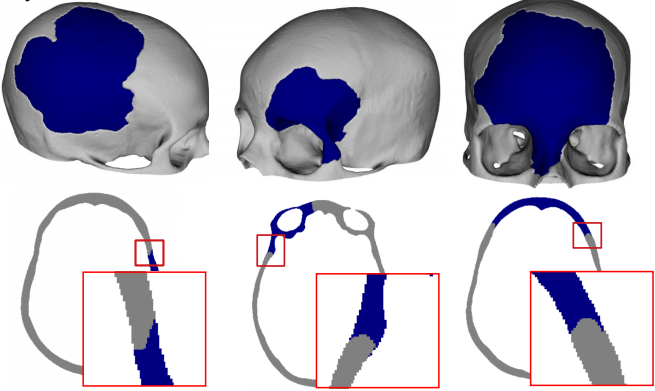Cranial implant design for diverse synthetic defects on aligned skulls
Skull defects can generally occur at various positions with different shapes and sizes. In this task, the skulls were roughly aligned into standardized position to reduce positional variability, while the synthetic defects have random shapes and positions to simulate the variability. 570 cases are available for training and 100 for evaluation.
Each case is comprised of a complete skull, a defective skull with a defect and the corresponding implant. The defects are further sorted by their general type such as unilateral, bilateral and fronto-orbital, which can be used to identify weak and strong points of implant design methods. The defect borders are also smoothed to simulate bone remodeling processes in real patient cases. One of the goals of this task is to evaluate the quality of high-resolution fit of the reconstructed shape to the original skull.

Note that the skulls in this task were created using a different segmentation procedure (i. e. some bone cavities are filled). Participants should therefore take care in case of combining datasets from different tasks.
Task 1 related inquiries: Oldřich Kodym, ikodym@fit.vutbr.cz (please take cc: autoimplant.challenge@gmail.com).
